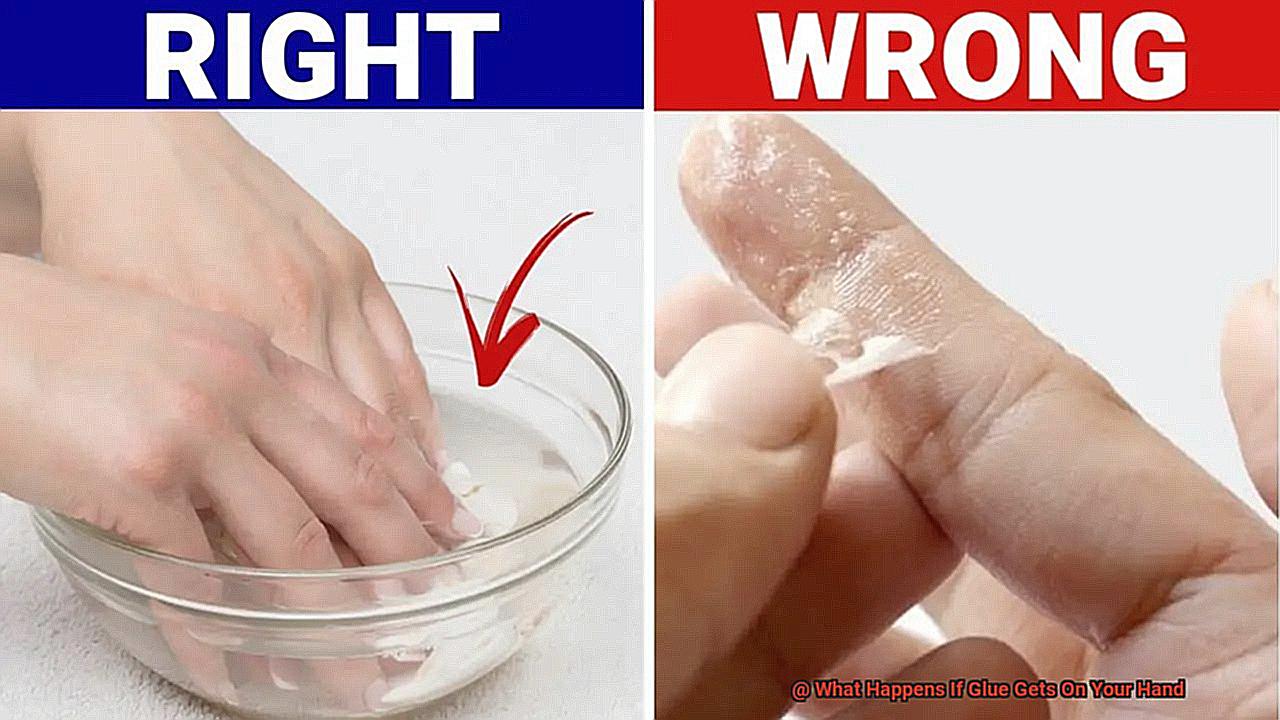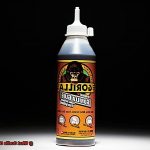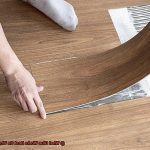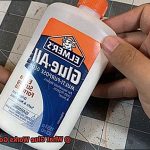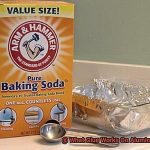Ever found yourself caught in a sticky situation with glue on your hand? It happens to the best of us – whether it’s a craft project gone awry, a repair job that got messy, or simply an unfortunate spill. While glue is fantastic for bonding materials together, it can quickly become a frustrating nuisance when it sticks to our skin.
In this captivating blog post, we’ll delve into the intriguing world of what really happens when glue gets on your hand. From scientific explanations to practical advice, we’ll explore all the nitty-gritty details of this common yet often overlooked predicament.
Picture this: you try prying apart your glued fingers only to find stubborn residue clinging relentlessly to your skin. You might be left wondering about the exact chemical reactions at play. Fear not. We’re here to uncover the science behind glue’s adhesive powers and shed light on why it clings so tenaciously to our hands.
But it doesn’t stop there – we’ll also investigate the consequences of having glue on your hand. Delicate skin, like that on our fingers, can be sensitive to the ingredients found in different types of glue. We’ll examine potential skin conditions and irritations that may arise and share effective remedies to ease any discomfort.
And if you’re tired of dealing with these pesky glue mishaps altogether, don’t worry. We’ve got you covered with practical tips and tricks to prevent them from happening in the first place. Plus, we’ll provide quick action steps and suggest specific solvents that will help you confidently tackle any accidental encounters with adhesive.
So get ready to unravel the fascinating effects of glue on your hand. Don’t let sticky situations hold you back – arm yourself with knowledge and be prepared for any unexpected bonding adventures.
Immediate Action to Take if Glue Gets on Your Hand
Contents
- 1 Immediate Action to Take if Glue Gets on Your Hand
- 2 Effects of Glue on the Skin
- 3 Types of Glue and Their Associated Risks
- 4 Duration of Contact with Glue and Severity of Effects
- 5 How to Remove Glue from the Skin
- 6 Using Solvents to Remove Stubborn Glue
- 7 Seeking Medical Advice for Dried or Hardened Glue
- 8 Prevention Strategies to Avoid Getting Glue on Your Hands
- 9 Conclusion
Accidentally finding glue on your hand can be a real sticky situation. But fear not. By keeping a level head and following the right steps, you can swiftly rid yourself of the glue and avoid any unnecessary discomfort or harm. In this comprehensive guide, we will walk you through the immediate actions to take if glue gets on your hand, ensuring a seamless adhesive removal process.
Stay calm, take charge:
The first and most crucial step is to maintain composure. Panicking or rushing will only exacerbate the issue. Take a deep breath and proceed confidently with the following steps.
Identify the culprit:
Different glues demand different removal methods. Identifying the type of glue that has adhered to your hand is essential for choosing the most effective approach.
Water-based glues (craft glue, school glue):
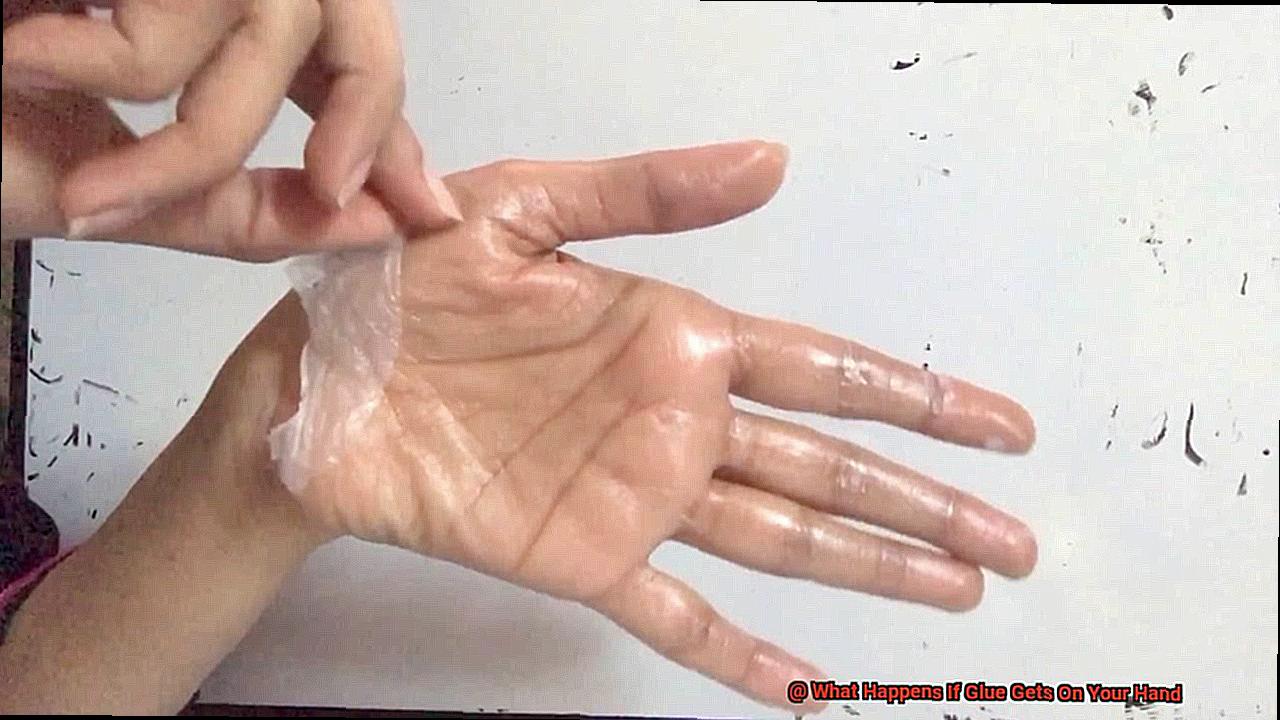
For water-based glues like craft glue or school glue, washing your hands with warm soapy water is the go-to solution. Generate a sudsy lather by gently rubbing your hands together, then rinse thoroughly under running water. This simple act will help eliminate the glue from your skin.
Super glue (cyanoacrylate adhesive):
Super glue may bond quickly, but it’s no match for your resourcefulness. Begin by soaking the affected area in warm soapy water for at least 5 minutes. This soaking process loosens the bond between the glue and your skin. Afterward, gently attempt to peel or roll the glue off your skin using a soft cloth or your fingers. Avoid forceful pulling to prevent skin irritation or tearing. Should the glue prove stubborn, repeat the soaking process until it relinquishes its grip.
Adhesive glues (construction adhesive, epoxy glue):
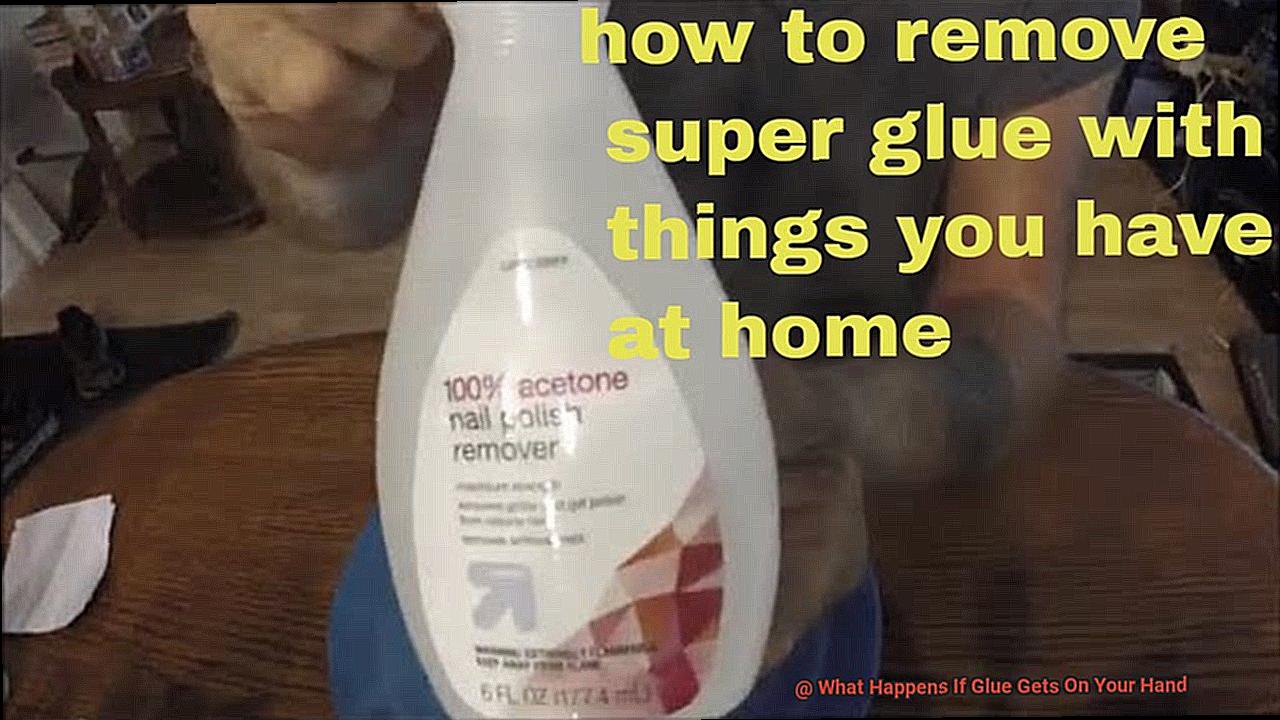
When dealing with adhesive glues like construction adhesive or epoxy glue, consult the product’s safety instructions or seek advice from a healthcare professional. These formidable glues may necessitate specialized solvents or techniques for safe removal.
Keep an eye out for skin reactions:
Certain glues have the potential to cause skin irritation or allergic reactions. If you notice any discomfort, redness, swelling, or persistent pain after removing the glue from your hand, seek immediate medical attention.
Effects of Glue on the Skin
Picture this: you’re in the midst of a creative project or a household repair, and before you know it, a glob of gooey glue lands on your skin, leaving you in a sticky situation. But have you ever wondered about the mysterious effects that glue can have on your delicate skin? In this captivating exploration, we’ll delve into the intriguing world of glue and its impact on your skin. Brace yourself for adhesive properties, potential burns, irritation, dryness, and more. So, pull up a chair and prepare to be enthralled by the secrets of glue and its effects on your skin.
The Iron Grip of Adhesive Properties:
First and foremost, let’s talk about the immediate effect of glue on your skin – its uncanny adhesive properties. Just like glue bonds objects together, it clings to your skin with an unyielding grip. Imagine having that one friend who just won’t let go – that’s exactly how it feels. You’re left with discomfort and a persistent pulling or tightening sensation that can be quite bothersome.
When Skin Meets Irritation:
Glues consist of an array of chemicals and substances, not all of which mesh well with our skin. For some unfortunate individuals, coming into contact with glue can result in irritation or allergic reactions. It’s as if your skin throws a tantrum when glue decides to get cozy. The aftermath may include redness, itching, and even rashes. If you have sensitive skin or known allergies, exercising caution when dealing with this sticky substance is crucial.
Handle with Care: Chemical Burns on the Horizon.
While most glues won’t cause significant harm, certain types possess the power to pose a genuine threat. Enter super glue and epoxy glue – renowned for their strong bonding capabilities. These glues contain cyanoacrylate, a chemical that, when exposed to moisture (hello sweat.), can generate heat. This heat has the potential to unleash unpleasant burns or blisters if you don’t act swiftly. Remember, haste makes waste – promptly attending to any unwanted burns is of utmost importance.
Types of Glue and Their Associated Risks
It can be quite uncomfortable, but what many people may not realize is that different types of glue pose different risks when they come into contact with your skin. In this article, we will delve into the world of glues and explore their associated risks, ensuring that you are well-informed and able to handle these situations with ease.
Super Glue: A Bonding Force to Reckon With
Super glue, also known as cyanoacrylate adhesive, is renowned for its rapid bonding and strong adhesion properties. However, if this powerful adhesive comes into contact with your skin, it can lead to irritation, redness, and an unpleasant burning sensation. Its quick-drying nature makes removal a challenge without proper care. When faced with this sticky predicament, exercise caution and promptly wash your hands to alleviate any discomfort.
Epoxy Glue: Uniting Strength with Sensitivity
Epoxy glue is a versatile adhesive widely used in crafts, woodworking, and construction projects. While it excels in creating robust bonds, contact with the skin can induce irritation and allergic reactions in susceptible individuals. It is important to note that epoxy glue consists of two components that must be mixed before application. Direct contact with these components can even result in chemical burns. Therefore, exercise caution when handling epoxy glue and meticulously adhere to the instructions to mitigate any potential risks.
Contact Cement: The Mighty Adhesive with Solvent Secrets
Contact cement stands as a formidable adhesive choice for bonding materials such as wood, laminates, and plastics. However, should this adhesive come into contact with your hand, it can cause skin irritation, dryness, and even trigger allergic reactions. The solvents present in contact cement evaporate during the curing process, and prolonged exposure to these solvents can be detrimental to your skin’s health. Thus, exercise vigilance when using contact cement and minimize direct contact to safeguard your skin.
Hot Glue: Quick-Drying, but Handle with Care
Hot glue has gained popularity among craft enthusiasts due to its rapid drying time. However, if hot glue makes contact with your skin while in its molten state, it can result in painful burns and unsightly blisters. To avoid these unfortunate incidents, always handle hot glue guns with utmost care and consider utilizing protective measures such as gloves or heat-resistant mats for added safety.
Wood Glue: Bonding Wood, Beware of Allergies
Wood glue is specifically formulated for joining wood pieces together securely. While generally safe to use, some individuals may experience skin irritation or allergic reactions when exposed to this adhesive. After using wood glue, it is highly recommended to thoroughly wash your hands to eliminate any residue and prevent potential skin issues from arising.
Duration of Contact with Glue and Severity of Effects
Get ready to embark on a fascinating journey as we unravel the hidden truths behind this sticky conundrum.
The Waiting Game: Types of Glue and Their Drying Time
In the vast world of glue, patience is not just a virtue, but a necessity. With glues that dry faster than a lightning bolt and those that take their sweet time, timing is everything.
Quick-drying glues possess formidable adhesive properties, causing them to cling more stubbornly once they’ve set. Remember, the type of glue you encounter influences your window of opportunity before it becomes an indelible mark.
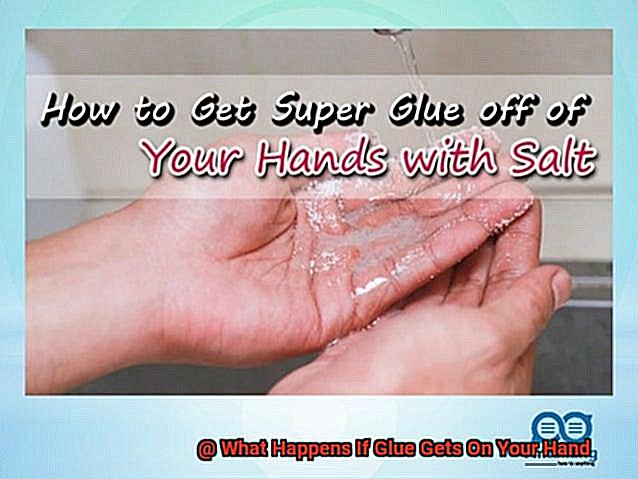
Skin Irritation and Allergic Reactions: The Unfriendly Side of Glue
Prepare to delve into the less pleasant consequences of prolonged encounters with glue on your skin. Certain glues harbor chemicals that pack a punch, leaving your skin red, itchy, or inflamed. These not-so-friendly compounds may even escalate to blisters or rashes in severe cases. Brace yourself for an unpleasant surprise.
Chemical Burns: When Glue Turns into a Fiery Foe
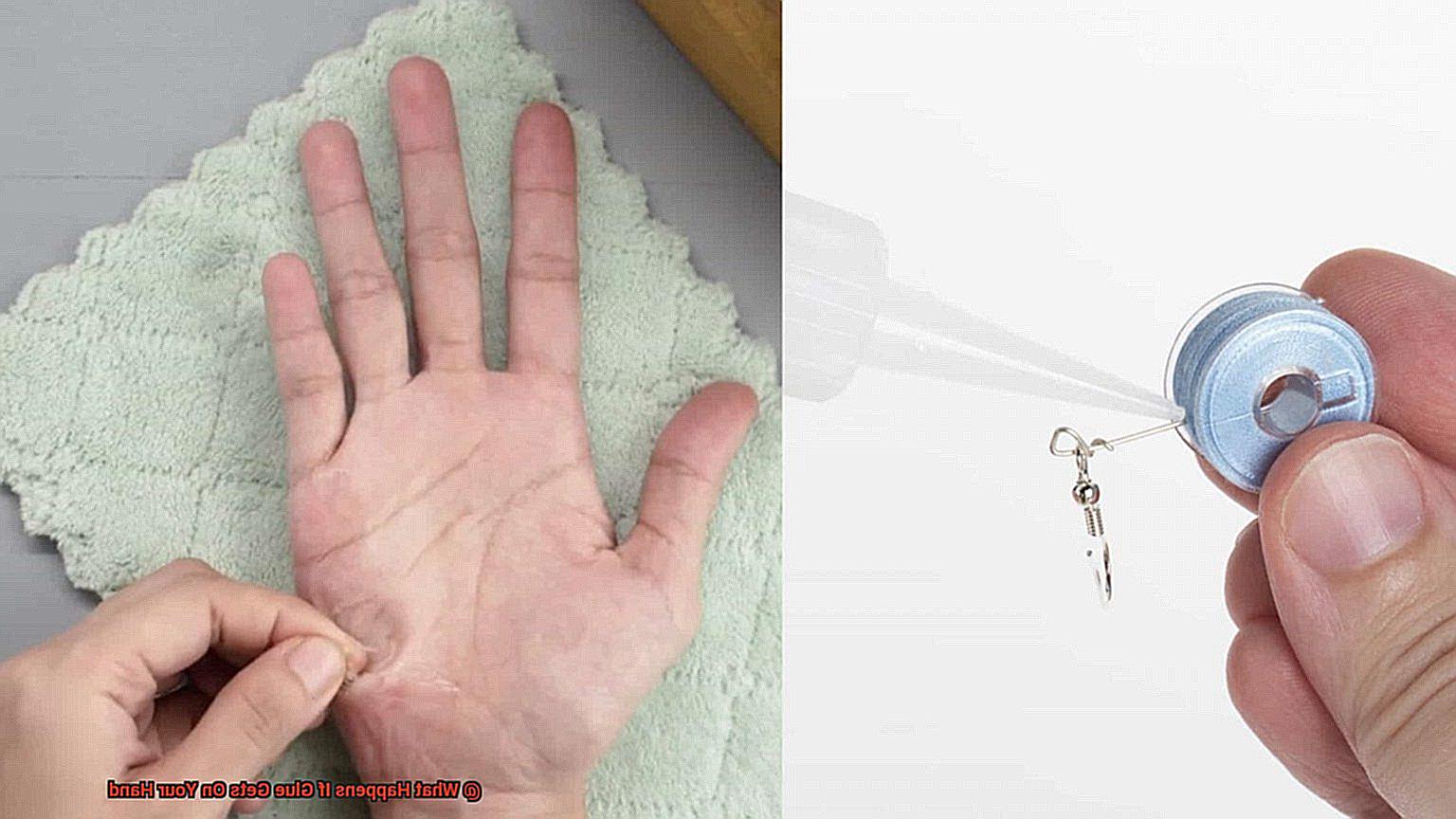
Remember those chemistry lessons? Well, some glues contain solvents or acids that transform into formidable foes upon extended exposure to your skin. These chemical burns can inflict excruciating pain and necessitate medical attention. It’s time to acknowledge the potent power lurking beneath the innocent facade of these adhesive substances.
Everybody Reacts Differently: The Glue Sensitivity Spectrum
Prepare for an intriguing twist – individuals react distinctively to glue exposure. Some fortunate souls exhibit heightened sensitivity or allergic reactions to specific glue ingredients, rendering them more susceptible to adverse effects. It’s akin to a captivating game of chance where your skin’s unique characteristics come into play. Be mindful of your own sensitivities and take extra precautions accordingly.
How to Remove Glue from the Skin
We’ve all experienced that frustrating moment when glue ends up on our skin, seemingly impossible to remove. But fear not. We have some fantastic tips and tricks to help you bid farewell to that sticky situation. Let’s dive in and explore the various methods for removing glue from your skin with ease and confidence.
Soap and Water: The Power of Suds
Sometimes, the simplest solutions are the most effective. Begin by washing the affected area with warm water and a mild soap. As you gently rub in circular motions, you’ll feel the glue loosen its grip. Remember, there’s no need to scrub vigorously; doing so could further irritate your skin. Rinse thoroughly and pat dry for a clean and adhesive-free finish.
Oil and Petroleum Jelly: Slippery Solutions
When glue proves to be stubborn, it’s time to bring out the big guns – oil or petroleum jelly. Apply a small amount of either substance directly onto the glued area and massage it into your skin. Allow it to work its magic for a few minutes, breaking down the adhesive properties of the glue. Then, using a clean cloth or tissue, wipe away the dissolved glue. Repeat this process if necessary until your skin is completely free from any sticky residue.
Nail Polish Remover: Breaking Boundaries
For those strong adhesives like super glue, acetone-based nail polish remover can be your secret weapon. However, exercise caution as acetone can be harsh on the skin and cause dryness or irritation. Test a small area of your skin first to ensure compatibility. Once confirmed, apply a small amount of nail polish remover onto a cotton ball or pad and gently rub it onto the glue. Rinse with warm water after the glue dissolves, leaving your skin gloriously adhesive-free.
Vinegar: The Natural Remedy
If you prefer natural remedies or have sensitive skin, vinegar can be an excellent alternative for removing glue. Soak a cloth or cotton ball in vinegar and apply it to the affected area. Allow the vinegar to work its magic for a few minutes before gently rubbing the glue off your skin. Rinse with warm water and pat dry, reveling in your glue-free success.
Be Gentle: Don’t Scrub, Just Rub.
When removing glue from your skin, it’s essential to be gentle and avoid aggressive scrubbing. Vigorous scrubbing can lead to skin irritation and worsen the situation. Instead, use gentle circular motions or light rubbing to loosen the glue’s grip on your skin. Take your time and let the chosen method do its work – patience pays off when it comes to freeing your skin from unwanted adhesive.
Using Solvents to Remove Stubborn Glue
Imagine a world where stubborn glue is no match for your determination. With solvents by your side, you can bid farewell to that pesky adhesive residue that clings to your hands. In this captivating guide, we will explore the realm of solvents and their remarkable ability to conquer even the most tenacious glues. From the formidable acetone to the versatile rubbing alcohol and the unexpected hero, vegetable oil, we have the secrets to liberate you from the clutches of sticky situations. Get ready to embark on an exhilarating journey towards a glue-free existence.
Acetone: The Unstoppable Adhesive Dissolver
Acetone, the mighty warrior of solvents, fearlessly battles against the toughest adhesives, including super glue. This potent solvent can be found in nail polish removers, making it easily accessible for all. To wield the power of acetone, simply saturate a cotton ball or pad with this wonder liquid and gently massage the affected area.
Witness as the glue surrenders and dissolves under its influence. Once vanquished, wipe away any remnants with a clean cloth or tissue.
Rubbing Alcohol: The Gentle Yet Relentless Solution
For those seeking a gentler approach, rubbing alcohol emerges as a formidable ally. Also known as isopropyl alcohol, this household hero can still break down glue with finesse. Soak a cotton ball or pad in rubbing alcohol and delicately rub the afflicted area. Observe as the adhesive weakens its grip and becomes more manageable to remove. Finish off by eliminating any lingering traces with a clean cloth.
Vegetable Oil: The Unexpected Savior
Unbeknownst to many, salvation from stubborn glue can be found in an unexpected place – your very own kitchen pantry. Behold the surprising hero: vegetable oil. Apply a small amount of this elixir to the glue-ridden region and gently massage it in.
The oil performs its enchantment by disintegrating the adhesive, rendering it easily removable. Following this triumph, cleanse your hands thoroughly with soap and water to eliminate any remnants of the miraculous oil.
Seeking Medical Advice for Dried or Hardened Glue
Imagine the frustration of having dried or hardened glue stuck to your hand. It’s a sticky nightmare that can be tempting to tackle with DIY solutions. But before you grab those scissors or start scraping, pause and consider why seeking medical advice is your best bet for a safe and effective removal process.
Don’t Risk DIY Disasters:
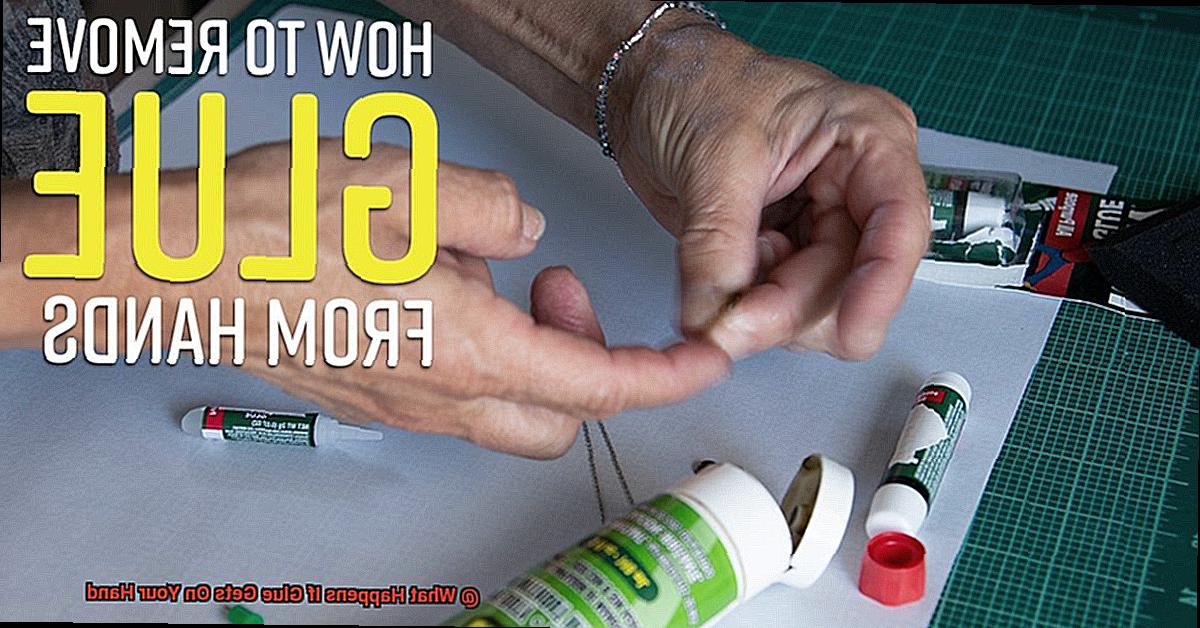
When faced with stubborn dried glue, the instinct to scrape or peel it off might be strong. But beware. This can lead to painful skin damage. Seeking medical advice before taking action ensures a safer approach to freeing your hand from its adhesive prison.
Dermatologists to the Rescue:
Enter the dermatologist, the superhero of all things skin-related. These specialists hold the key to expert guidance in removing dried or hardened glue. With their knowledge, they can recommend specific products and techniques tailored to your skin type and the type of glue involved.
Trust Your General Practitioner:
Don’t underestimate the wisdom of your general practitioner or family doctor. They have the expertise to assess your situation and offer appropriate advice. If necessary, they can also refer you to a specialist. Remember, time is crucial as leaving dried or hardened glue on your skin can lead to complications.
Solvent Solutions under Supervision:
In some cases, medical professionals may recommend solvents or adhesive removers to dissolve dried or hardened glue. However, it’s important to use these products under professional supervision. Improper use can irritate or damage your skin, so following instructions from healthcare experts is vital.
Allergies and Sensitivities Matter:
Before attempting any removal methods, inform your medical professional about any allergies or sensitivities you have. This information allows them to choose suitable products that won’t cause adverse reactions. A safe and comfortable experience is always a priority.
Say No to Harsh Chemicals and Tools:
While waiting for medical advice, resist the temptation to use harsh chemicals or tools at home. Excessive force or abrasive materials can lead to injuries and worsen the situation. Instead, gently clean the area around the dried glue with mild soap and warm water, preventing dirt or bacteria buildup.
Prevention Strategies to Avoid Getting Glue on Your Hands
Working with glue can be a sticky situation, quite literally. We’ve all experienced the frustration of trying to scrape off dried glue from our hands, but why go through the hassle when you can prevent it from happening in the first place? In this article, we’ll share some expert prevention strategies that will keep your hands glue-free and save you from a potential nightmare. So, let’s dive right in.
Use protective gloves:
Are you ready to take the first step towards glue-free hands? Protective gloves are your best friend in this endeavor. Opt for gloves made of latex or nitrile, materials that are resistant to glue. These gloves act as your shield, ensuring that no glue comes into contact with your precious hands. Remember, a perfect fit and complete hand coverage are essential for maximum protection.
Apply lotion or barrier cream:
Before embarking on your adhesive project, pamper your hands with a layer of lotion or barrier cream. This simple yet effective step creates a protective shield on your skin, making it easier to remove any accidental glue encounters. Look for lotions or creams specially designed for adhesives or chemicals for an added boost of defense.
Use a brush or applicator:
Say goodbye to messy finger applications. Upgrade your technique by using a brush or applicator for precise glue placement. This not only gives you better control but also eliminates the risk of getting glue on your hands. Brushes and applicators are easily cleaned or replaced, ensuring a clean and glue-free work environment.
Work in a well-ventilated area:
Don’t let strong glue fumes cramp your style. To avoid potential irritation or allergic reactions, choose a well-ventilated workspace with proper air circulation. Open windows or employ fans to keep the air flowing smoothly. And, if necessary, add an extra layer of protection by wearing a mask. Breathe easy and work confidently.
Clean up spills immediately:
Accidents happen, but they don’t have to leave a lasting mark on your hands. Be prepared with a trusty cloth or paper towels at arm’s reach to swiftly clean up any spills. Acting fast prevents the glue from spreading and sticking to your skin. Remember, time is of the essence when it comes to spill cleanup.
Conclusion
When glue comes into contact with your hand, it can have a range of effects. Firstly, the glue may stick to your skin, creating an adhesive bond that can be difficult to remove. This can cause discomfort and irritation as you try to free your hand from its sticky grasp. Additionally, certain types of glue contain chemicals that may cause skin reactions such as redness, itching, or even burns. It is important to wash off the glue promptly to minimize these potential side effects.
Furthermore, if the glue is left on your hand for an extended period of time, it may dry and harden. This can restrict your hand’s movement and make simple tasks more challenging. Imagine trying to type on a keyboard or tie your shoelaces with a stiff hand. Moreover, hardened glue can be unsightly and difficult to remove completely without damaging the skin.
In some cases, particularly if you have sensitive skin or allergies, the adhesive properties of certain glues can trigger an allergic reaction. This could manifest as swelling, redness, or even blisters on the affected area. If you experience any of these symptoms after getting glue on your hand, it is advisable to seek medical attention.
To mitigate the effects of glue on your hand, it is best to act quickly. Start by gently washing the affected area with warm water and soap. If necessary, use a mild solvent like rubbing alcohol or acetone to dissolve the adhesive bond. However, exercise caution when using solvents as they can also dry out and irritate the skin.
In conclusion, getting glue on your hand can be an inconvenient and potentially uncomfortable experience. From sticking and drying on your skin to causing allergic reactions or restricting movement – there are various consequences to consider.

